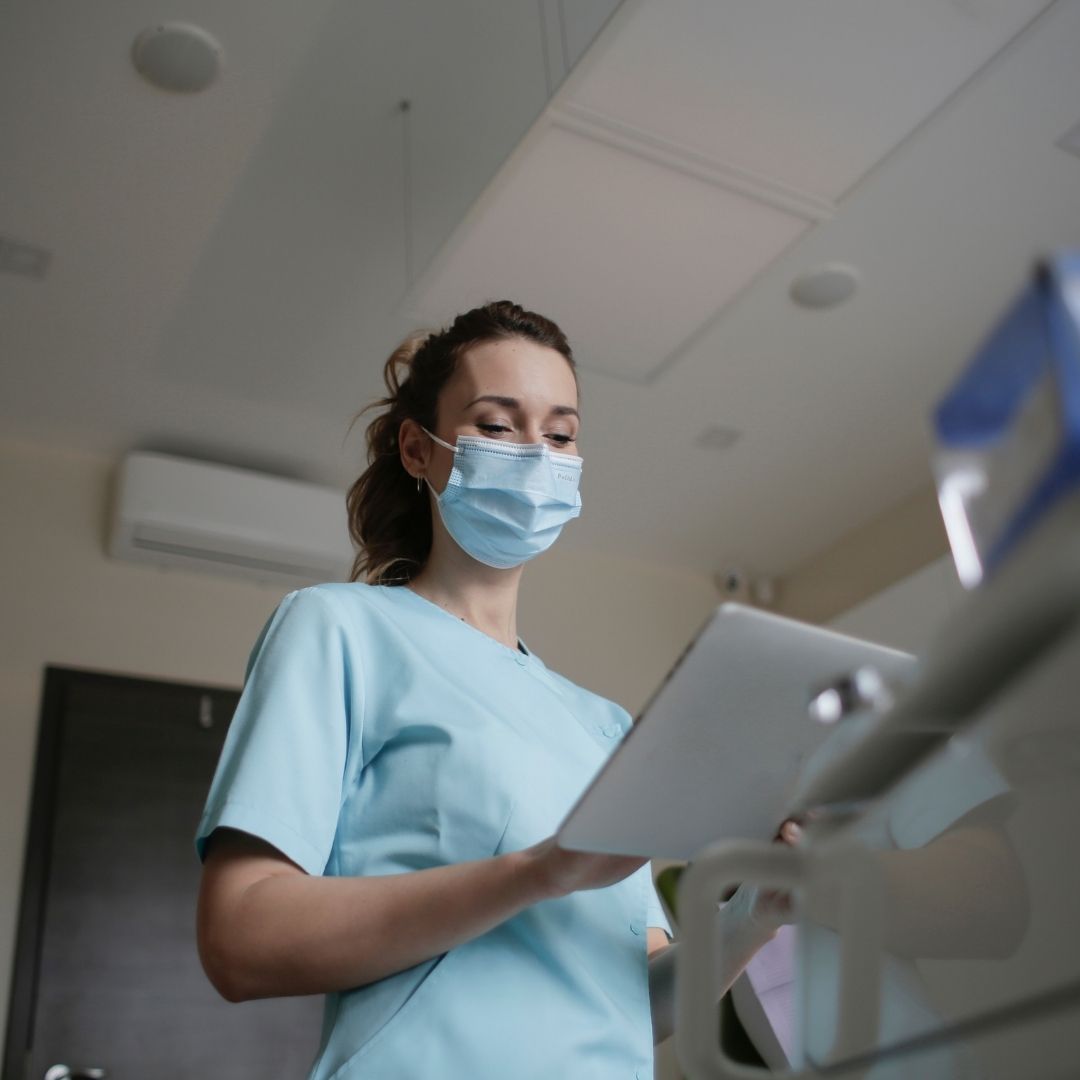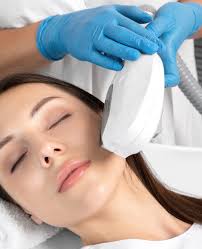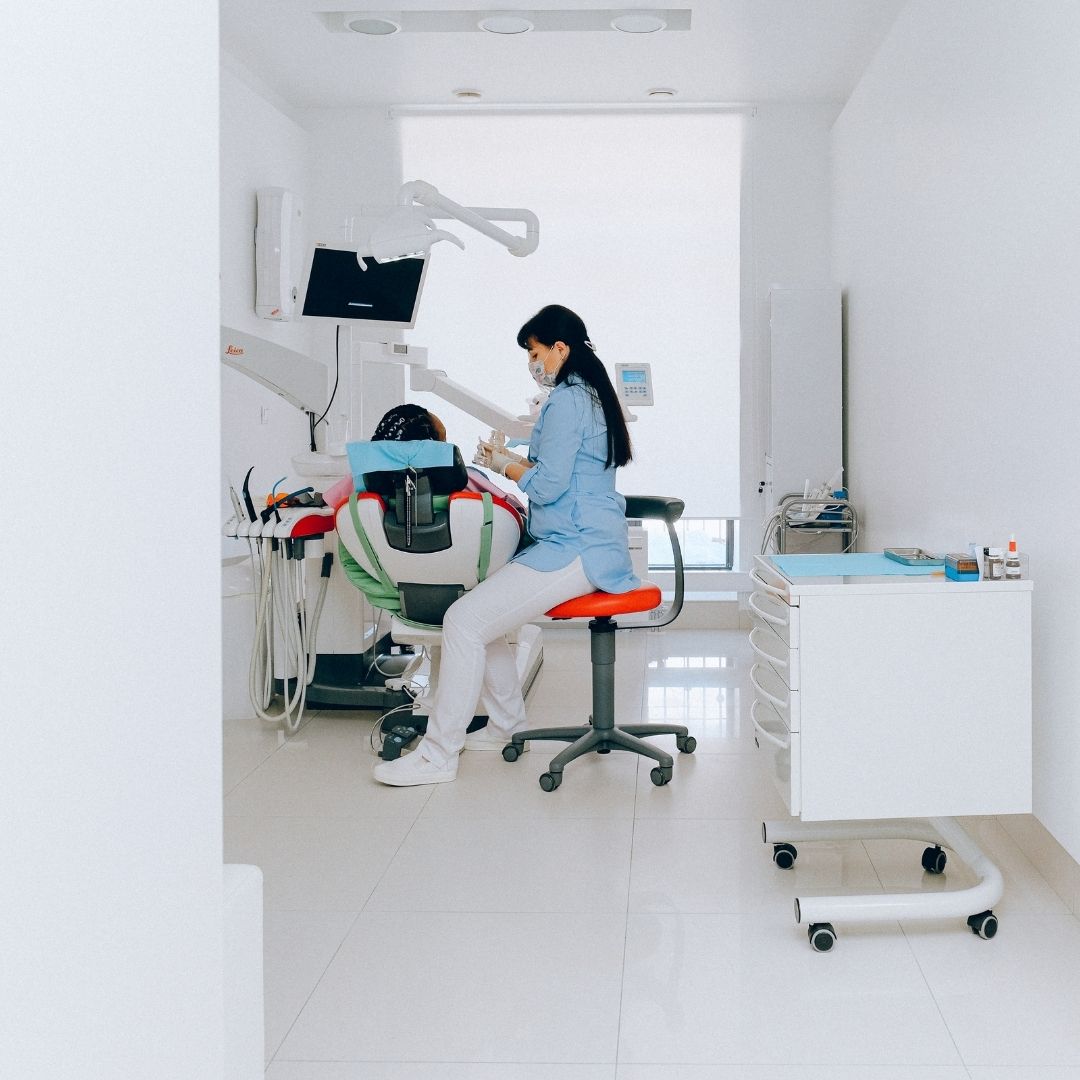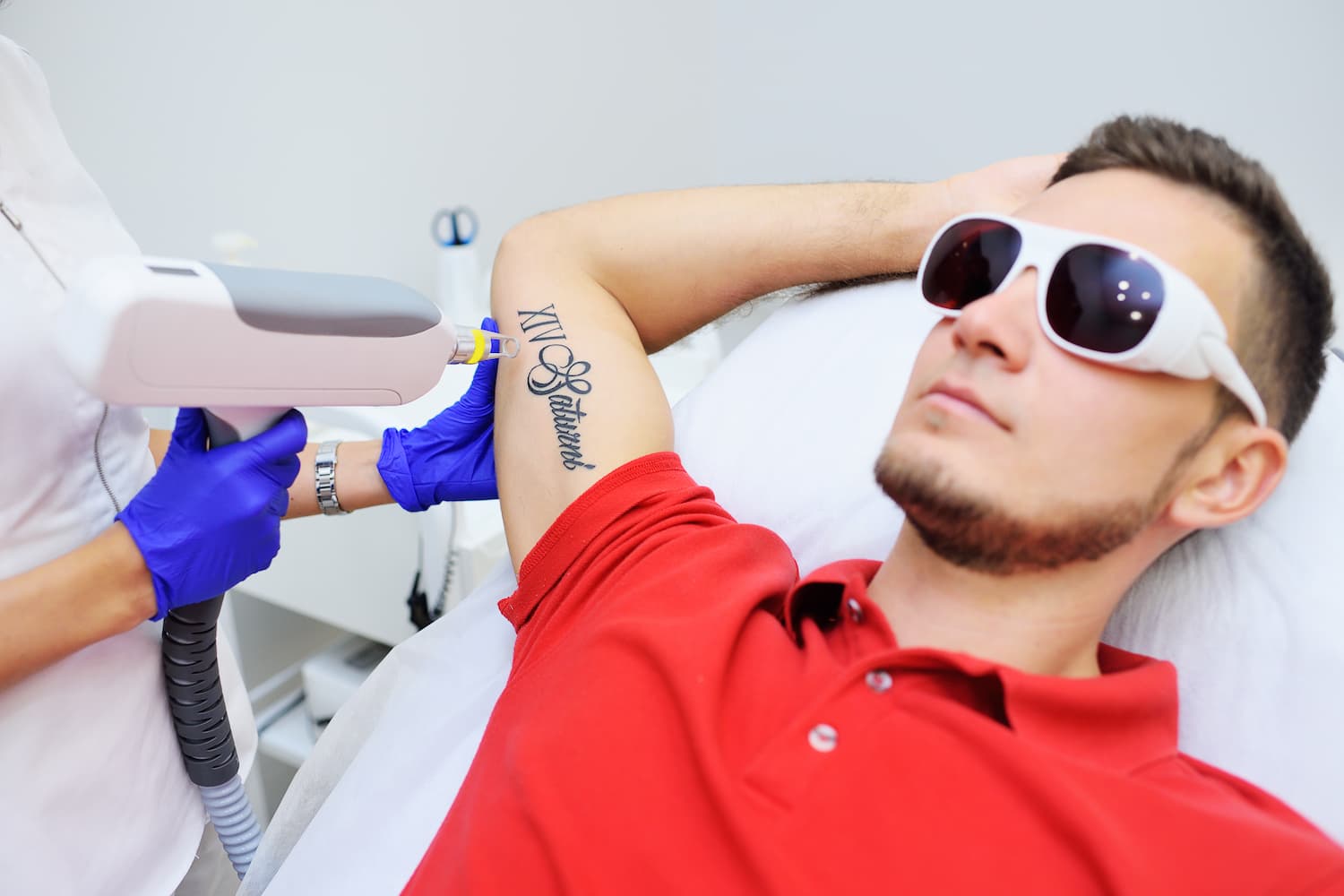
Tattoo Removal Aftercare: Tips and Tricks
Are you one of those people who decided to get a tattoo in their younger years, only to regret it later on? If so, you’re not alone. In fact, nearly a third of people with tattoos eventually come to regret their decision. Fortunately, tattoo removal is a viable option for those who wish to remove their tattoos. However, the process of tattoo removal doesn’t end once the procedure is over. Proper tattoo removal aftercare is essential for ensuring optimal healing and minimizing the risk of complications. In this ultimate guide, we’ll go over some tips and tricks for tattoo removal aftercare.
What Is Tattoo Removal?
Tattoo removal is a procedure that uses lasers to break down the ink particles in a tattoo, allowing the body’s immune system to flush them out naturally. This process involves the use of specialized lasers that emit high-powered beams of light that are absorbed by the tattoo ink. The light energy breaks the ink particles into tiny fragments, which are then carried away by the body’s lymphatic system.
Laser tattoo removal is considered to be one of the most effective and safest methods for removing tattoos. It’s a non-invasive procedure that doesn’t require any incisions or sutures, making it a popular choice for people looking to remove unwanted tattoos. While the procedure can be uncomfortable, most people find it to be less painful than getting a tattoo in the first place. Overall, tattoo removal can be a highly effective way to get rid of unwanted tattoos and restore the skin’s natural appearance.
What Can You Not Do After Tattoo Removal?
After getting a tattoo removed, it’s important to avoid certain activities and behaviors that could interfere with the healing process. Here are some things you should avoid:
Touching the treated area: Avoid touching the treated area as much as possible, as it can increase the risk of infection and slow down the healing process.
Excessive sweating: Avoid activities that can cause excessive sweating, such as working out or spending time in a sauna. Sweat can irritate the treated area and increase the risk of infection.
Exposing the treated area to sunlight: Direct sunlight can cause the treated area to become more sensitive and increase the risk of scarring. If you have to go outside, make sure to cover the treated area with clothing or a bandage.
Swimming: Avoid swimming or soaking in a hot tub until the treated area has completely healed. Chlorine and other chemicals in pools and hot tubs can irritate the treated area and slow down the healing process.
Using harsh skincare products: Avoid using harsh skincare products on the treated area, such as exfoliants or acne treatments. These products can irritate the skin and interfere with the healing process.
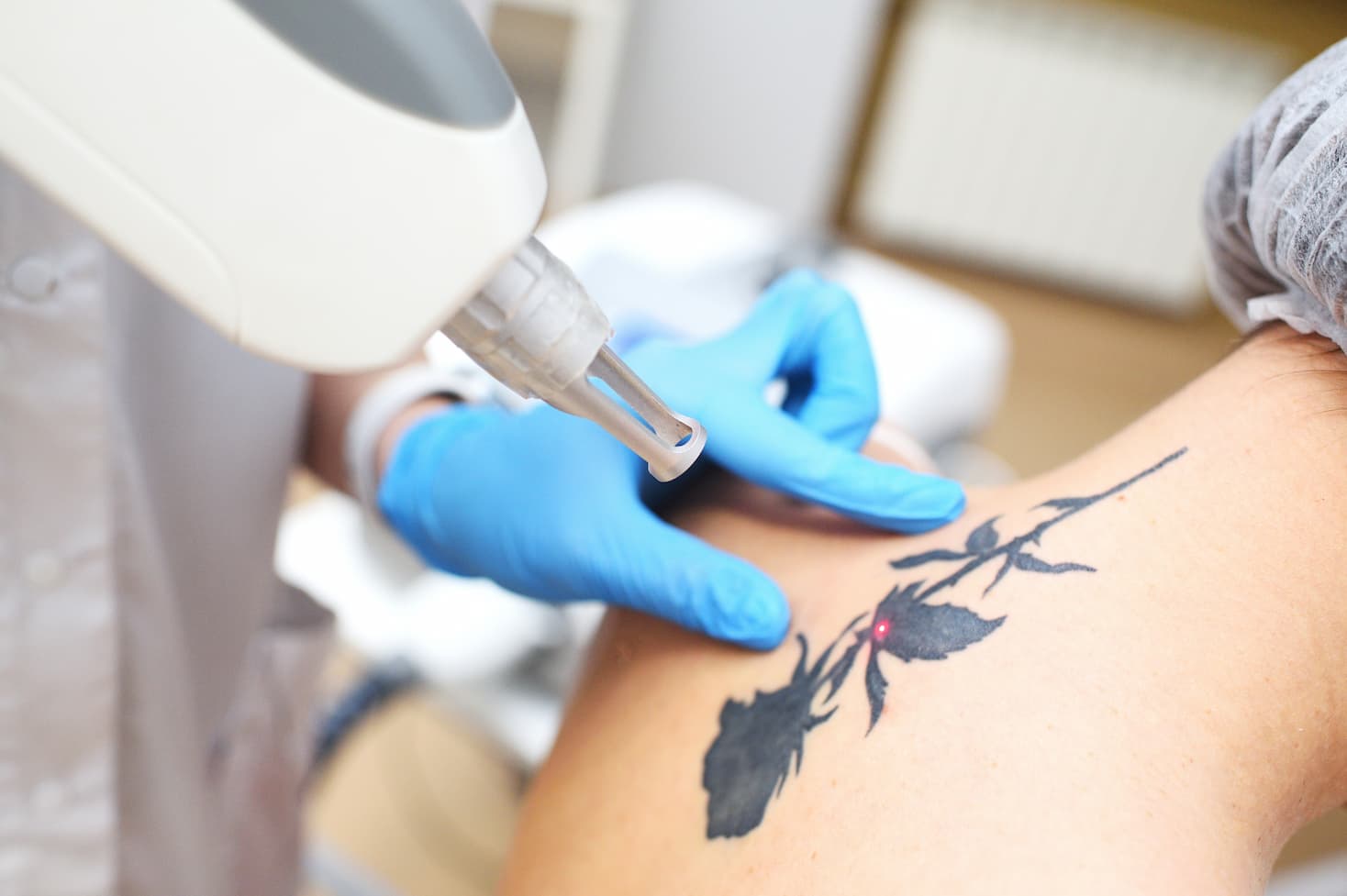
How Long Does It Take to Heal After Tattoo Removal?
The healing process after tattoo removal varies from person to person and depends on several factors, such as the size and location of the tattoo, as well as the number of sessions required for complete removal. In general, the treated area will be red and swollen for a few days after the procedure. Over the next few weeks, the tattoo will gradually fade away as the body’s immune system flushes out the ink particles.
In most cases, it takes about 4-6 weeks for the treated area to heal completely. During this time, it’s important to follow proper tattoo removal aftercare to ensure optimal healing and minimize the risk of complications.
Laser Removal Tattoo Aftercare Tips
Keep the treated area clean and dry: To prevent infection, it’s important to keep the treated area clean and dry. Avoid getting the area wet for at least 24 hours after the procedure.
Apply a cold compress: Applying a cold compress to the treated area can help reduce swelling and alleviate pain. Use a clean cloth or towel to apply the compress for 10-15 minutes at a time, several times a day.
Moisturize the treated area: After the first few days, it’s important to keep the treated area moisturized to prevent dryness and promote healing. Use a gentle, fragrance-free moisturizer several times a day.
Wear loose clothing: Tight clothing can irritate the treated area and slow down the healing process.
Avoid picking or scratching at the treated area: Picking or scratching at the treated area can increase the risk of infection and interfere with the healing process. If you experience itching, try applying a cool compress or taking an antihistamine.
Follow your doctor’s instructions: Your doctor at Healthy Türkiye will provide specific aftercare instructions based on the size and location of your tattoo, as well as the number of sessions required for complete removal. It’s important to follow these instructions carefully to ensure optimal healing and minimize the risk of complications.
How Can I Make My Tattoo Removal Go Faster?
While there’s no guaranteed way to speed up the tattoo removal process, there are some things you can do to help your body flush out the ink particles more quickly:
Stay hydrated: Drinking plenty of water can help your body flush out toxins and increase the effectiveness of the tattoo removal process.
Eat a healthy diet: Eating a diet rich in vitamins and minerals can help boost your immune system and promote healing.
Get plenty of rest: Getting enough rest can help your body heal more quickly and reduce the risk of complications.
Avoid smoking and drinking alcohol: Smoking and drinking alcohol can interfere with the healing process and slow down the tattoo removal process.
Can a Tattoo Be Fully Removed?
In most cases, tattoos can be fully removed with laser tattoo removal. However, there are some factors that can affect the success of the removal process. For example, tattoos that are located on areas with poor circulation, such as the feet or hands, may be more difficult to remove. Additionally, tattoos that are heavily layered or have been covered up may require more sessions for complete removal.
It’s also worth noting that some colors of ink are more difficult to remove than others. For example, black and dark blue ink are easier to remove than green, yellow, or red ink.
The Study of Tattoo Removal Aftercare
A recent study published in the Journal of Dermatology and Dermatologic Surgery investigated the factors affecting the speed and success of tattoo removal. The study analyzed a large sample of patients undergoing laser tattoo removal and found that hydration and a healthy diet played significant roles in improving the body’s ability to flush out tattoo ink particles. Furthermore, the study suggested that patients who followed proper tattoo removal aftercare, including moisturizing the treated area and avoiding smoking and alcohol, experienced faster and more effective tattoo removal outcomes. These findings provide valuable insights for individuals seeking to enhance the speed and success of their tattoo removal process.
How Painful Is Tattoo Removal?
The level of pain associated with tattoo removal varies from person to person and depends on several factors, such as the size and location of the tattoo, as well as the individual’s pain tolerance. In general, laser tattoo removal is considered to be less painful than getting a tattoo, but it can still be uncomfortable.
During the procedure, most people describe the sensation as a rubber band snapping against the skin. After the procedure, the treated area may be red, swollen, and tender for a few days. Over-the-counter pain relievers can help alleviate any discomfort.
Conclusion
In conclusion, proper tattoo removal aftercare is essential for ensuring optimal healing and minimizing the risk of complications. Following the tips and tricks outlined in this ultimate guide can help you achieve the best possible results from your laser tattoo removal procedure. Remember to always follow your doctor’s instructions and be patient, as the tattoo removal process can take several sessions to complete.

